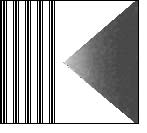Interviews
Fast and clear formula needed for textile policy – Chairman, KTML
07 Sep '09
7 min read

“The unit value can be increased only through marked improvement in quality, market tie-up, image building and change in business philosophy, which requires up-gradation in resource development both in manufacturing and marketing. The focus should be on R&D, technical innovation, product development on one hand and brand & market development on other with the goal of moving up in the global textile value chain”, he concluded by saying.
We than asked him to delve on the strength & weaknesses of the industry in Pakistan, to which he explained by saying, “Beginning with strengths, the low labor cost, along with availability of workforce and other raw materials are the basic strengths of textile and clothing (T&C) industry of Pakistan. The T&C industry is of immense importance to Pakistan as it provides an alternative to advance early stages of industrialization with high potential of employment generation and export expansion.
“It has traditionally been the stepping-stone towards industrialization. The sector not only forms a significant share of GDP and foreign exchange earnings, but it also contributes to human development objectives such as (female) employment, diffusion of knowledge and technology, and generation of revenue. Among weaknesses, the industry faces a demand and supply gap of cotton. Moreover, contamination of cotton results in its low quality.
“The low labor productivity, along with high-energy cost and subsequent high input costs are serious weaknesses of the industry. Moreover, lack of research & development has made the industry uncompetitive. Besides the poor infrastructure of the industrial sectors and the high utility expenses are also obstacles to proper growth. There is also a lack of some coordination and synergy between the public and private sector”.
The Pakistan Government has recently declared the first ever textile policy. We asked him about the benefits he foresees from the same. To which he said, “The policy sets an ambitious target of achieving exports totaling to US $25 billion over the next 5 years as compared to exports of $ 9.6 billion achieved during last fiscal year. The policy is really a broad based document which encompasses areas like technology up-gradation, infrastructure development, skill development, etc. and addresses rationalization of fiscal measures for the ailing textile industry along with removal of regulatory bottlenecks”.
He continued by saying, “The government has for the first time, addressed all sub-sectors of this industry separately with special emphasis on the value added sectors and the policy mainly provides many measures to address the falling trend of textile exports, but the most notable are; Tiered drawback scheme with maximum benefit to the value added sub sectors; Full refund of past R&D claims; The availability of export refinance at 5%; Priority in gas and electricity load management; Relief on existing long term loans; Zerorating of exports and tax free import of machinery.
We than asked him to delve on the strength & weaknesses of the industry in Pakistan, to which he explained by saying, “Beginning with strengths, the low labor cost, along with availability of workforce and other raw materials are the basic strengths of textile and clothing (T&C) industry of Pakistan. The T&C industry is of immense importance to Pakistan as it provides an alternative to advance early stages of industrialization with high potential of employment generation and export expansion.
“It has traditionally been the stepping-stone towards industrialization. The sector not only forms a significant share of GDP and foreign exchange earnings, but it also contributes to human development objectives such as (female) employment, diffusion of knowledge and technology, and generation of revenue. Among weaknesses, the industry faces a demand and supply gap of cotton. Moreover, contamination of cotton results in its low quality.
“The low labor productivity, along with high-energy cost and subsequent high input costs are serious weaknesses of the industry. Moreover, lack of research & development has made the industry uncompetitive. Besides the poor infrastructure of the industrial sectors and the high utility expenses are also obstacles to proper growth. There is also a lack of some coordination and synergy between the public and private sector”.
The Pakistan Government has recently declared the first ever textile policy. We asked him about the benefits he foresees from the same. To which he said, “The policy sets an ambitious target of achieving exports totaling to US $25 billion over the next 5 years as compared to exports of $ 9.6 billion achieved during last fiscal year. The policy is really a broad based document which encompasses areas like technology up-gradation, infrastructure development, skill development, etc. and addresses rationalization of fiscal measures for the ailing textile industry along with removal of regulatory bottlenecks”.
He continued by saying, “The government has for the first time, addressed all sub-sectors of this industry separately with special emphasis on the value added sectors and the policy mainly provides many measures to address the falling trend of textile exports, but the most notable are; Tiered drawback scheme with maximum benefit to the value added sub sectors; Full refund of past R&D claims; The availability of export refinance at 5%; Priority in gas and electricity load management; Relief on existing long term loans; Zerorating of exports and tax free import of machinery.
Popular News
Leave your Comments
Editor’s Pick
































-Ltd..jpg?tr=w-120,h-60,c-at_max,cm-pad_resize,bg-ffffff)





.jpg?tr=w-120,h-60,c-at_max,cm-pad_resize,bg-ffffff)
.jpg?tr=w-120,h-60,c-at_max,cm-pad_resize,bg-ffffff)






